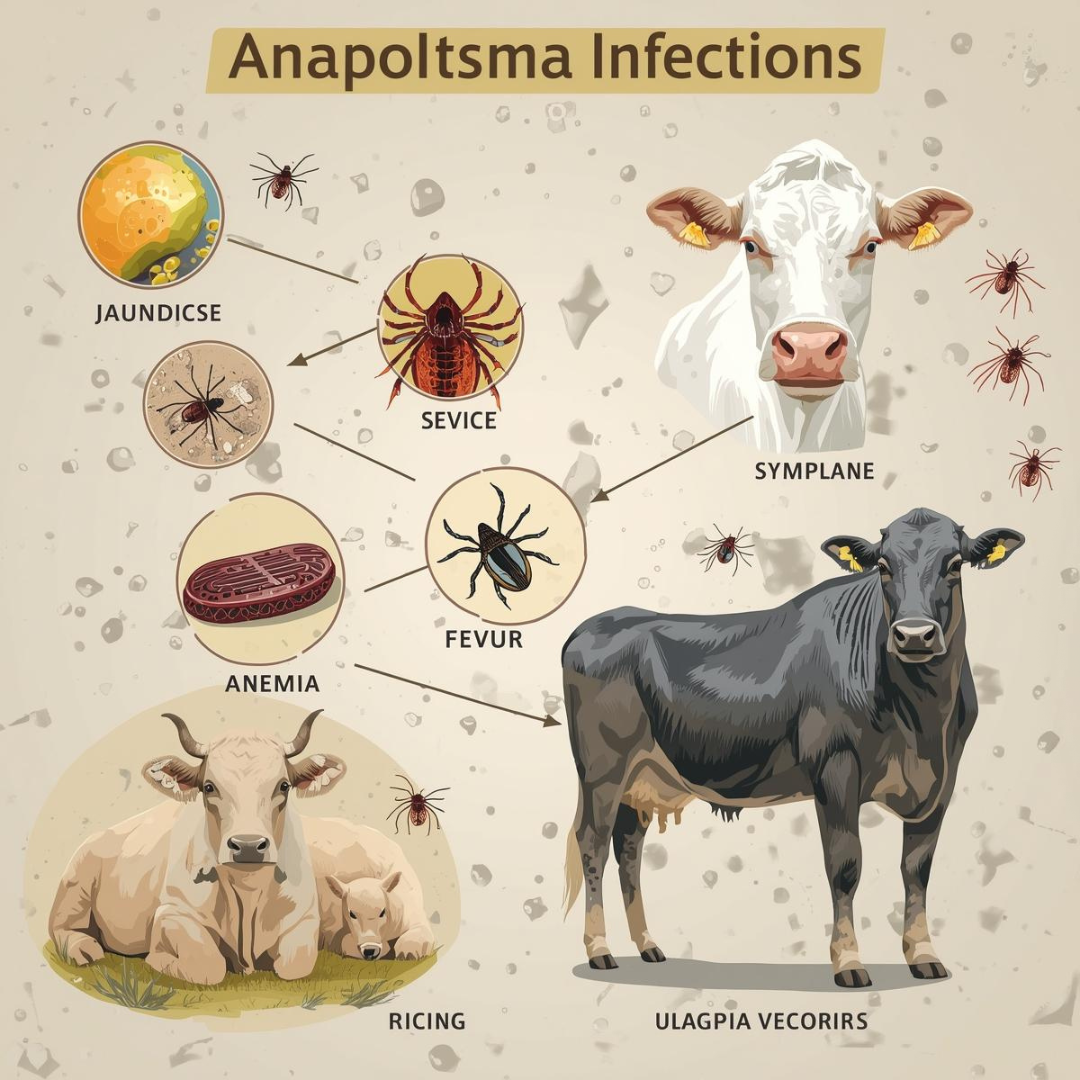
Anaplasmosis Treatment
What is anaplasmosis in cattle: Symptoms, Care, and Prevention for Farmers
Anaplasmosis is a serious blood-borne disease that affects cattle, goats, and sheep, and it is caused by bacteria of the genus Anaplasma. This disease is commonly spread through ticks, biting flies, or contaminated equipment, including needles and surgical instruments. Farmers often notice a sudden drop in productivity when animals are infected, making early detection, proper treatment, and prevention critical for herd health. Left untreated, anaplasmosis can be fatal and cause significant financial losses.
The bacteria primarily attack red blood cells, leading to anemia and general weakness. Infected animals often show signs of lethargy and may spend long periods lying down. Loss of appetite is common, and farmers may observe pale or yellowish mucous membranes in the eyes and gums, indicating jaundice. Rapid breathing and an increased heart rate are also frequent signs, and dairy cows may show reduced milk production. Weight loss and isolation from the herd can occur in severe cases. Because symptoms can appear suddenly, daily monitoring of livestock is essential, especially in areas where ticks are prevalent.
Symptoms of Anaplasmosis
Farmers should watch for these signs:
-
Fever and loss of appetite
-
Weakness and lethargy, sometimes causing collapse
-
Pale or yellowish gums and eyes (jaundice)
-
Rapid breathing and increased heart rate
-
Weight loss and reduced milk production
-
Animals may isolate themselves from the herd
Treatment of Anaplasmosis
Effective treatment requires prompt veterinary intervention:
-
Antibiotic therapy: Doxycycline or oxytetracycline under veterinary guidance
-
Supportive care: Ensure clean water and nutritious feed to help recovery
-
Isolation: Separate infected animals to prevent transmission
-
Tick control: Regular dipping, spraying, or use of acaricides to reduce tick populations
Prevention and Farmer Tips
Preventive measures help reduce the risk of infection:
-
Implement strict tick control programs
-
Avoid sharing needles or equipment between animals
-
Monitor livestock daily, especially during high-risk seasons
-
Vaccinate where available, following veterinary advice
-
Maintain clean housing and pasture management practices
About AfriMach Feeds
Proper nutrition is a key factor in preventing and recovering from diseases like anaplasmosis. Healthy, well-fed animals have stronger immune systems and are less vulnerable to infection. AfriMach Feeds provides high-quality livestock feeds and supplements across Kenya. We serve all types of livestock keepers — from smallholder farmers to commercial operations — offering feeds for cattle, goats, sheep, pigs, and poultry. Our supplements are designed to enhance immunity, improve fertility, and support overall animal health.
At AfriMach Feeds, we promise to deliver reliable, high-quality, and affordable nutrition solutions that help farmers maintain healthy, productive herds. By feeding your livestock properly, you reduce the risk of diseases like anaplasmosis while boosting growth, milk production, and profitability. Healthy animals lead to healthier farms and stronger livelihoods for farmers.